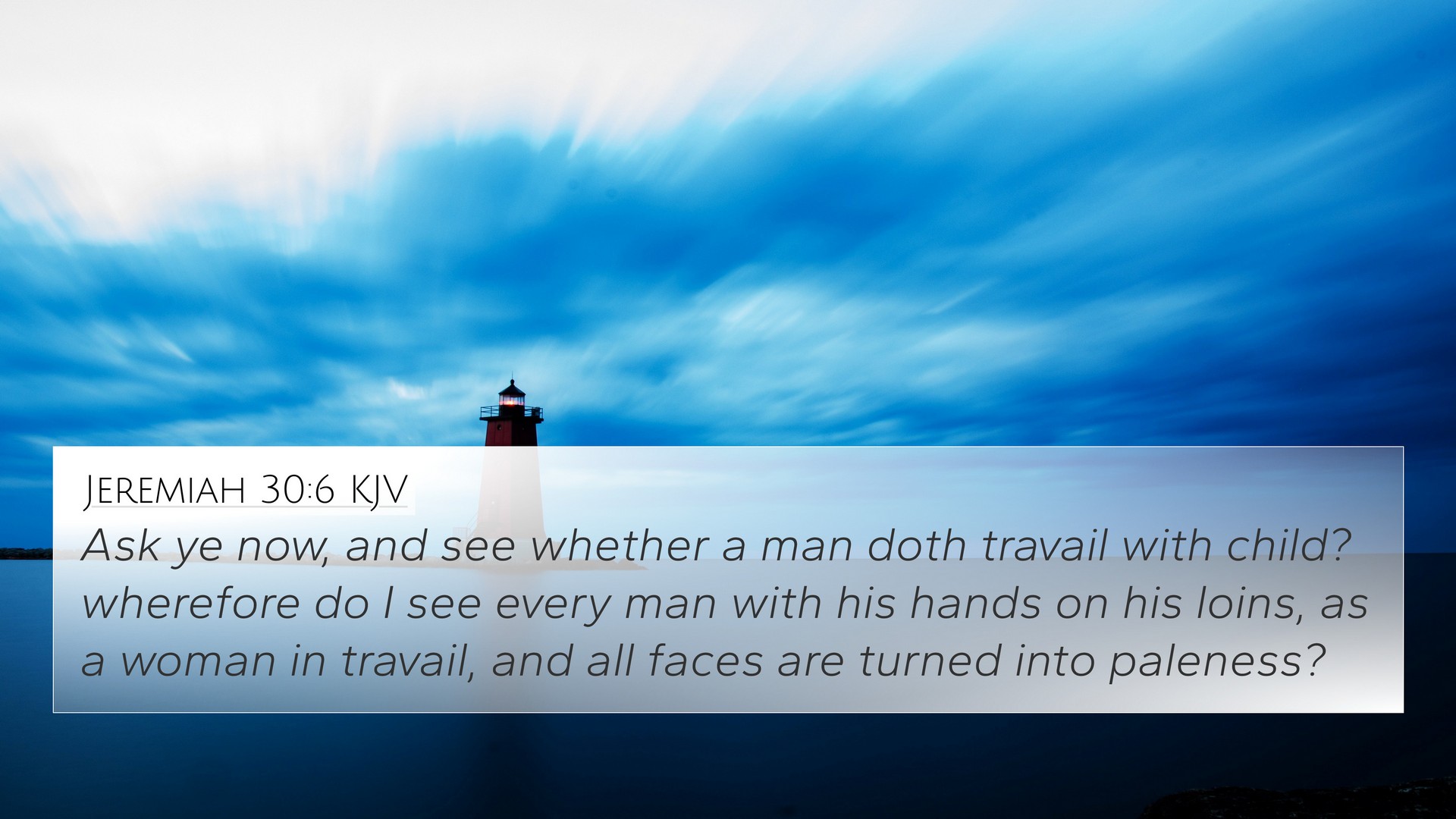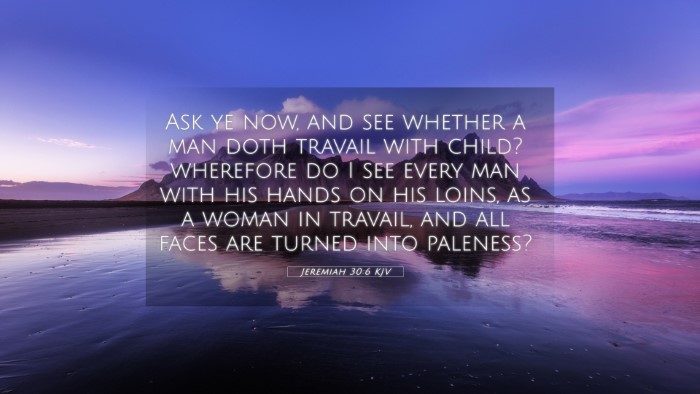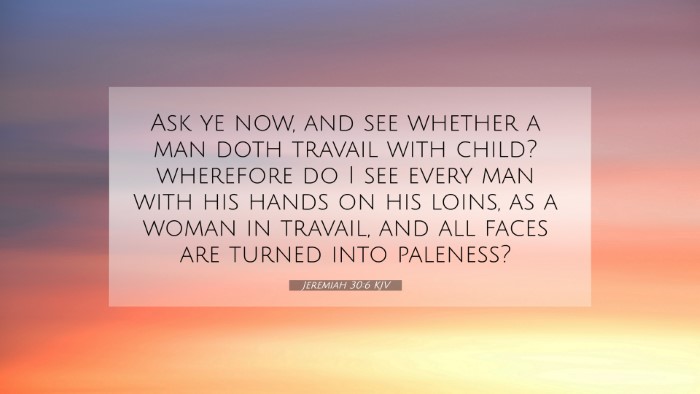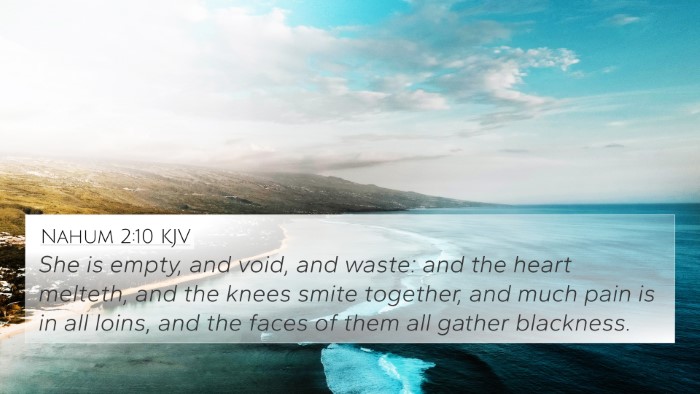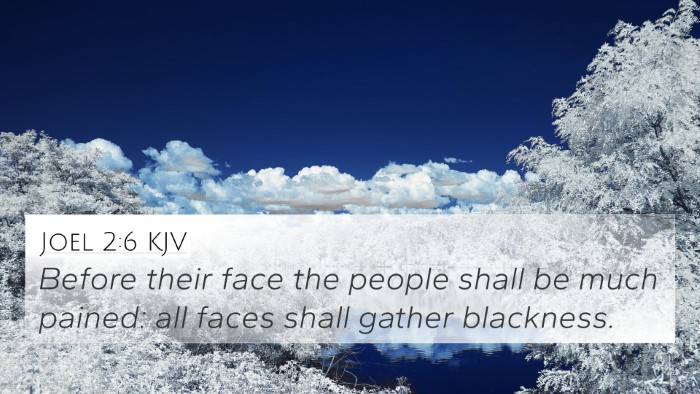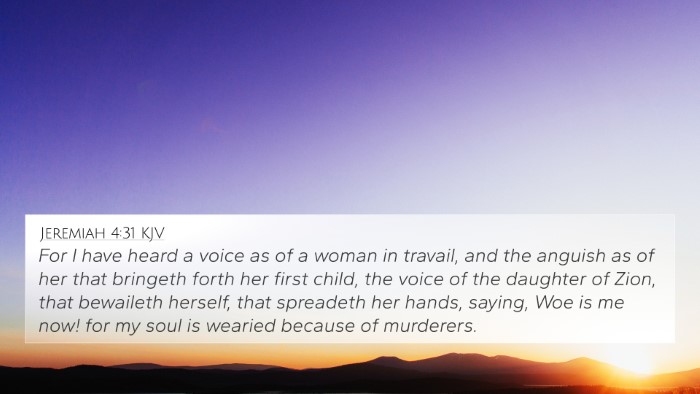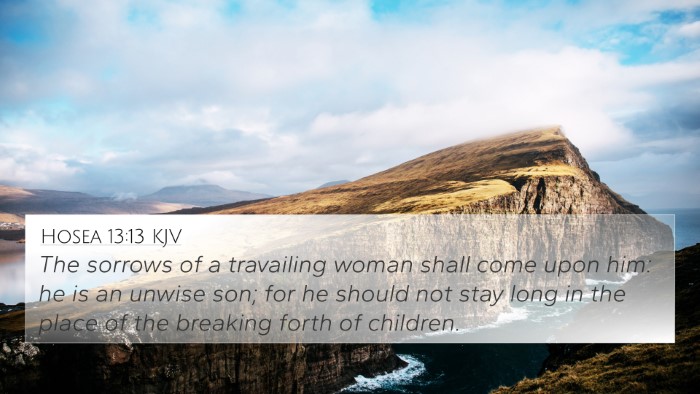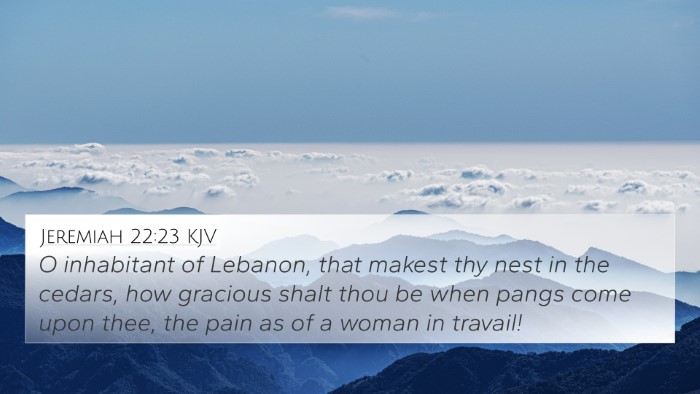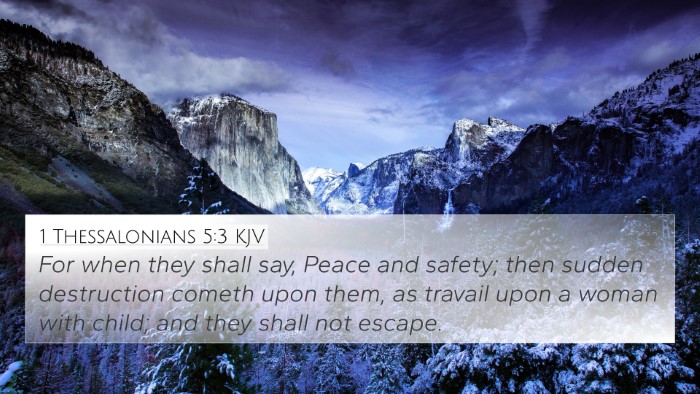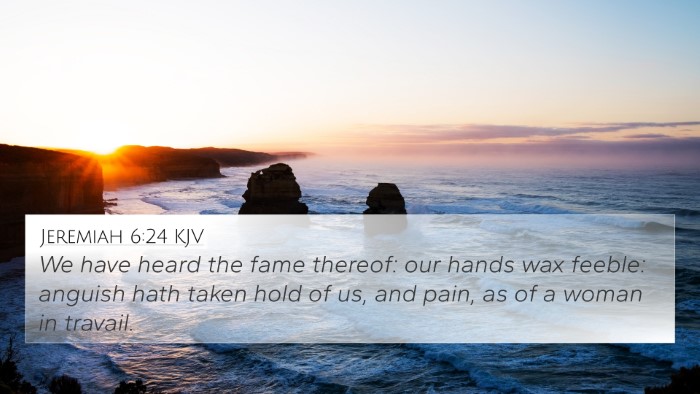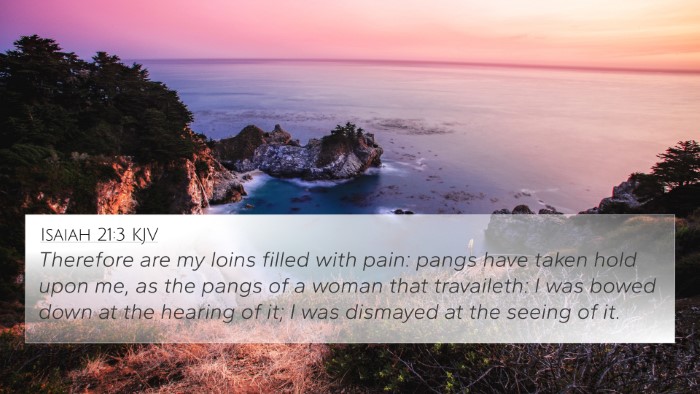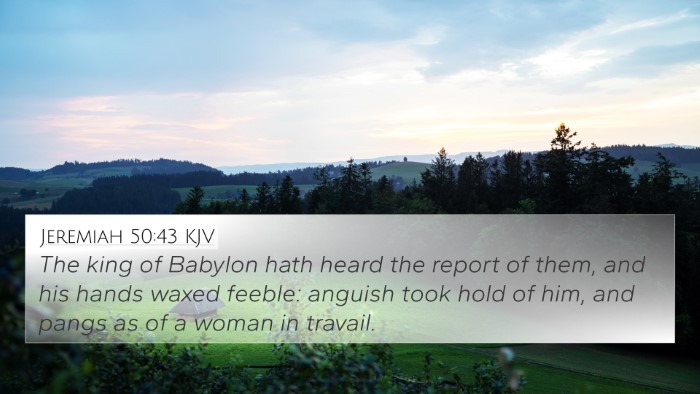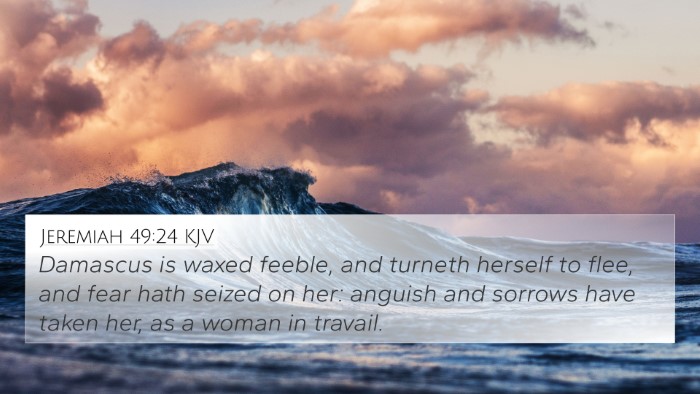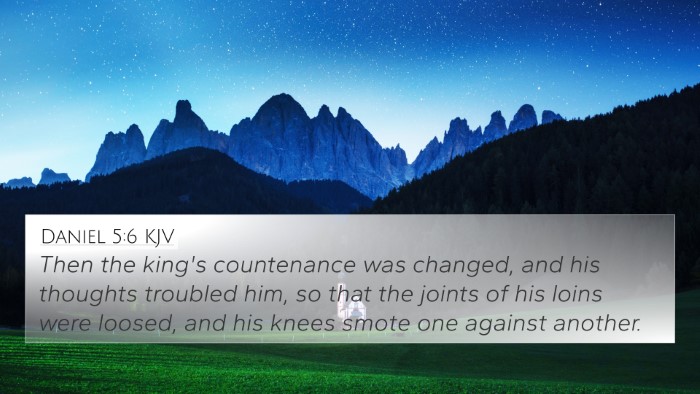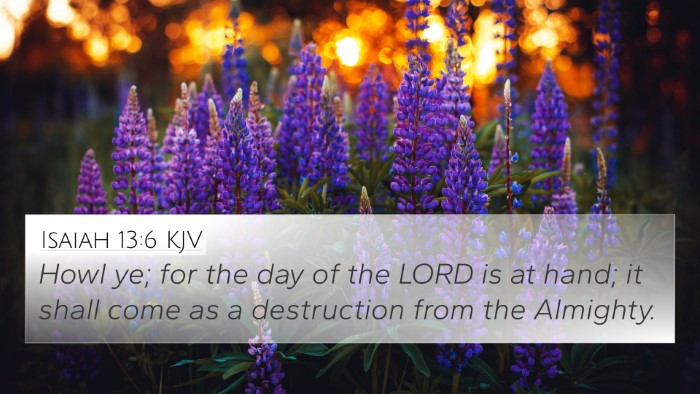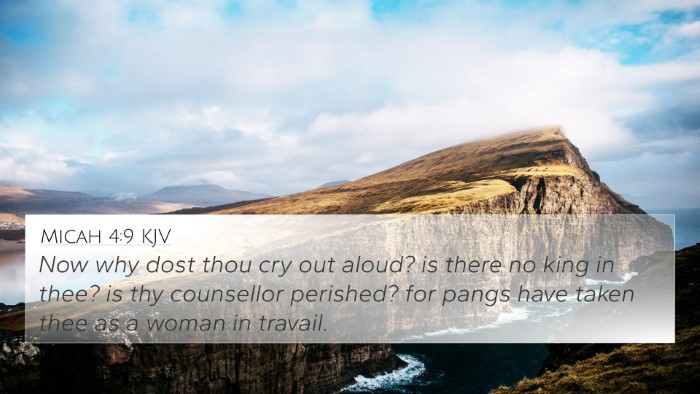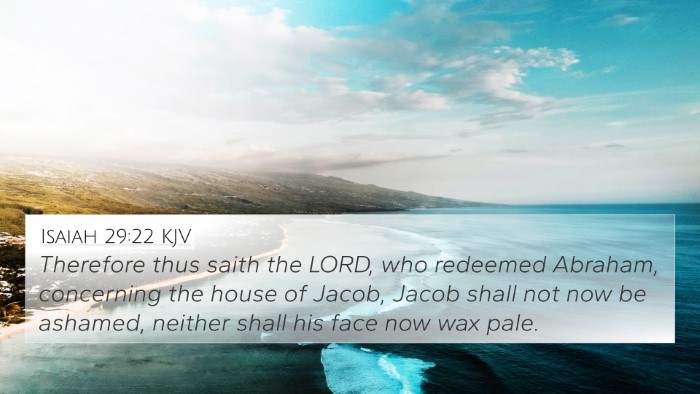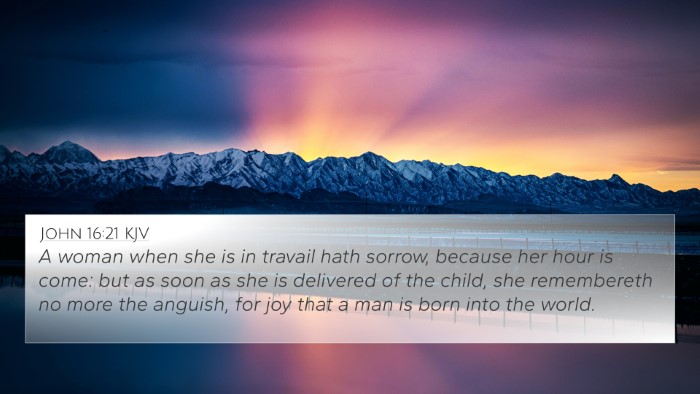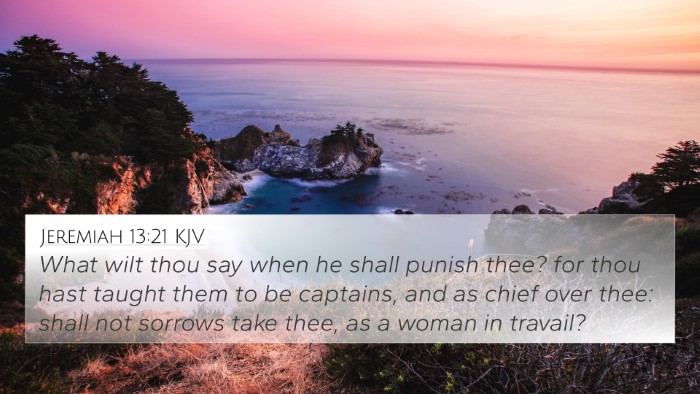Understanding Jeremiah 30:6
Verse: Jeremiah 30:6 - "Ask ye now, and see whether a man doth travail with child? wherefore do I see every man with his hands on his loins, as a woman in travail, and all faces are turned into paleness?"
Summary of Interpretation
This verse describes a metaphorical perception of distress and anguish among the people of Israel. It employs vivid imagery of a man in labor to illustrate the intense suffering and turmoil they are experiencing. This type of expression suggests that the suffering is so severe that even the strong would show signs of weakness, akin to a woman in labor. The use of feminine imagery to describe male suffering highlights the depth of their struggles.
Commentary Insights
-
Matthew Henry:
Henry emphasizes the unusual nature of men experiencing such labor pains, illustrating the profound severity of Israel's crisis. He suggests that this reflects the universal human experience of suffering, indicating that the distress of the people is reality so extraordinary that it defies typical gender experiences.
-
Albert Barnes:
Barnes notes that the verse serves as a prophetic image that reflects the unprecedented anguish awaiting the people of Judah. He articulates how the description signifies both a physical and spiritual agony that will overwhelm them as they face impending calamity and eventual restoration.
-
Adam Clarke:
Clarke points out that the historical context reveals a time when the nation would experience extreme distress, akin to birth pangs. He stresses the importance of realizing that God's hand is at work during such trials, pushing for a transformation and new birth of hope for the people.
Bible Verses Cross-References
Jeremiah 30:6 ties into various other scriptures that highlight themes of suffering, labor, and divine intervention. Here are 10 biblical references related to this verse:
- Isaiah 26:17-18 - Compares the agony of labor pains to the struggles of Israel.
- John 16:21 - Illustrates the concept that sorrow can lead to joy as in childbirth.
- Romans 8:22 - Explains that creation groans as in the pains of childbirth waiting for redemption.
- Micah 4:9-10 - Discusses the people’s pain and eventual restoration from captivity.
- Matthew 24:8 - Refers to the beginnings of sorrows consistent with labor pains indicative of future tribulation.
- Psalms 48:6 - Expresses trembling and fear in the context of God’s intervention.
- Jeremiah 12:4 - Reflects on the suffering of those who witness injustice.
- Lamentations 3:31-33 - Emphasizes God’s compassion amidst suffering.
- Hosea 13:13 - Captures the anguish of punishment and restoration in a birth-labor analogy.
- Galatians 4:19 - Paul expresses the desire for Christ to be formed in the struggling believers, similar to labor pains.
Thematic Connections
The themes in Jeremiah 30:6 connect strongly with various biblical motifs regarding suffering and eventual restoration. These themes form an inter-Biblical dialogue that illustrates the commonality of human experience through different contexts:
- Human Struggle: The child labor metaphor symbolizes deep distress faced in times of crisis, echoed across multiple texts (e.g., Isaiah and Lamentations).
- Hope and Restoration: The eventual turn towards joy after suffering is a recurring biblical motif, linking to Pauline epistles.
- Divine Purpose in Pain: Each mention of labor highlights God's sovereign plan in the midst of turmoil, relevant to both Old and New Testament narratives.
Tools for Bible Cross-Referencing
For deeper study, utilizing tools such as a Bible concordance, Bible cross-reference guide, or cross-reference Bible study methods can aid in identifying these connections:
- Cross-referencing Bible study methods enhance understanding of similar biblical themes.
- The Bible reference resources available can facilitate discovering thematic links.
- Using a comprehensive Bible cross-reference system supports in-depth analysis of scriptural parallelism.
Conclusion
Jeremiah 30:6 serves as a poignant reminder of the depth of human suffering and the hope for restoration through God's intervention. By exploring this verse alongside other texts, one can appreciate the intricate narrative of anguish and joy woven throughout Scripture. Employing tools for cross-referencing allows believers to deepen their understanding and find solidarity in the shared struggles depicted across biblical writings.
